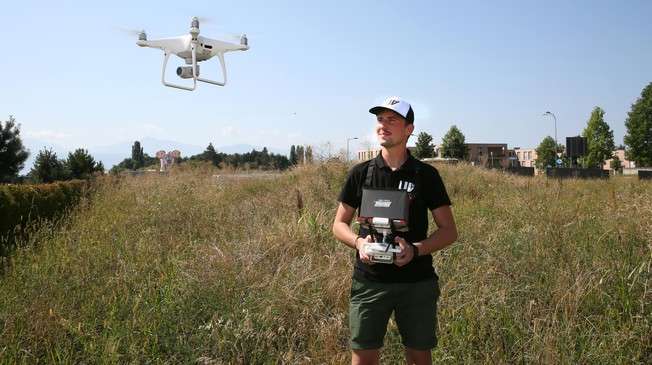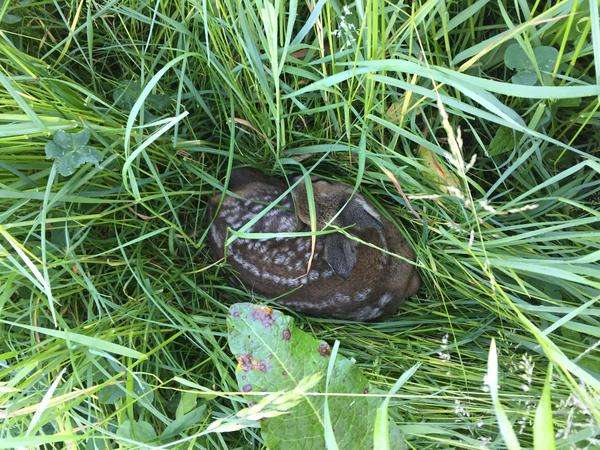Credit: EPFL / Alain Herzog
Using a thermal camera mounted on a drone, an EPFL student has found a way to spot fawns before the harvester passes through. He does not charge for this service, which effectively eliminates the risk of animals being accidentally killed in the fields.
Simon Jobin is an architecture student and aerial photography specialist. When he's not studying, he works for a Fribourg-based company set up by his brother and other students. "We make videos, do thermal imaging, monitor the progress of construction projects and create 3D models of plots of land," he explains. After reading an article about fawns being accidentally killed by farm machinery during the harvest season, he realized that his drone could serve an unexpected purpose.
"When they hear the tractors coming, fawns lie down in the tall grass rather than running away. They're almost invisible. When I read the article, we'd just bought a thermal camera, and the idea came to me immediately," says Jobin. Up to now, farmers called on gamekeepers and hunters – who are responsible for protecting wildlife as well as managing it – to clear the fields of the animals. "Gamekeepers also have thermal imaging devices that they use to sweep the fields on foot, but this flattens the grass and is very time-consuming," explains Jobin.
Credit: Ecole Polytechnique Federale de Lausanne
Before the crack of dawn
The farming community was extremely interested when Jobin pitched his idea. This year, he's already helped farmers rescue fawns on around ten occasions. And it means he has to get up very early: "You have to be there before the crack of dawn, otherwise the sun warms up the ground and the drone's thermal camera can't effectively detect the animals' body heat," he explains.
The drone scans the field following a set course, covering every inch of land. Tiny yellow dots on the screen show where the fawns are. The animals then have to be moved without any direct physical contact. Or, an even better solution, they can be covered with a box so that the farmers can work around them. The outcome? The drone has a 100 percent success rate when it comes to saving fawns, which are then found by their mothers once the humans have left.
A network of drone pilots
There's a real sense of a job well done, for the volunteers, the gamekeepers and the farmers. "They're really happy to have our help – the farmers always regret it when they accidentally kill a fawn," says Jobin. Given the method's success, Simon and his colleagues are getting ready to set up a network of pilots to keep up with demand. "Harvesting takes place at a specific time of year, and it is not feasible for farmers to get their own drone and thermal camera, which costs almost 25,000 Swiss francs. That's why it would be great to be able to rely on a network of volunteers who already have the right equipment." Calling all drone pilots!
Provided by Ecole Polytechnique Federale de Lausanne
























